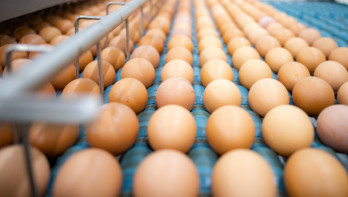Analysis Eggs
Bird flu continues to plague egg market in the USA
The American price of eggs has been quite volatile in recent months. Due to bird flu and increased supply, the price occasionally rises significantly. On the other hand, prices drop earlier because the market is more attuned to the disease.
This summer, the American egg price fluctuated significantly. On July 12, eggs were still traded for $2.33 per dozen. On September 4, the price rose to the highest level of the year, reaching $4.42. The quotation has since dropped significantly. On Tuesday, September 24, the price of eggs had dropped to $2.29 per week.
Unlike Europe, the United States continues to suffer significantly from bird flu. This particularly poses problems in the laying hen husbandry, as the rounds take considerably longer than in the broiler industry. Since the beginning of the year, 18.7 million laying hens have been culled in the United States. As a result, the number of laying hens decreased by 3% to 371 million hens, according to data from the United States Department of Agriculture (USDA). Egg production in June was 2% lower than in the same month in 2023.
The reason for the price derailment in August is mainly due to a relatively recent increase in the number of bird flu infections. Particularly in May, a significant number of laying hens were culled. In that month alone, the market lost as many as 5.6 million laying hens. This was noticed in August because it can take up to 22 weeks for a laying hen to become productive.
Demand is rising
The lower production is accompanied by a significantly higher demand. In August, the demand for eggs increased by 5% compared to the same month in 2023. In August 2024, a total of 237 million eggs were sold to consumers in the United States. According to American trade media, such sales figures have not been seen since the start of the COVID-19 pandemic. During that period, eggs were hoarded on a large scale. Additionally, the export in 2024 is higher than expected, at least for the first four months of the year, as more recent data is not yet available. In the first four months of the year, exports were 22% higher than in the same period a year earlier.
The reason for the rapid price drop now is that the market is increasingly prepared for new infections. The market is becoming more capable of placing new hens outside the regular rounds, which is reflected in the figures for this period. In May, the number of placements increased by 4% compared to the same month in 2023. However, that was not the moment when the increase in the number of eggs peaked. In April, the number of placements was even 5.4% higher. In the most recent month known, July, an additional 4% of laying hens were placed.


